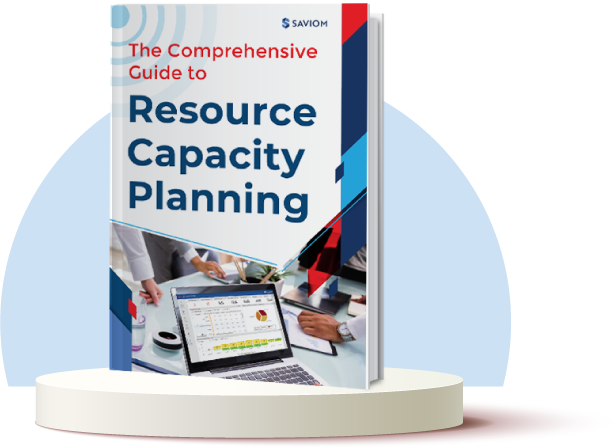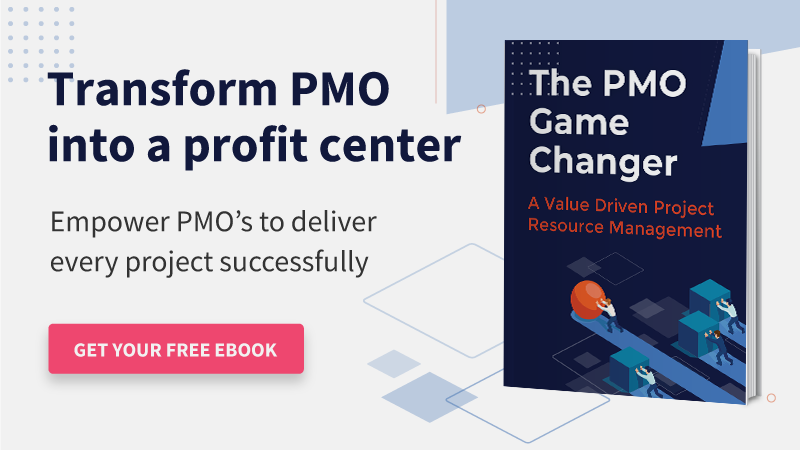Imagine you’re planning a home renovation. Before starting, you’d create a detailed timeline outlining every step: from choosing contractors and sourcing materials to scheduling when each part of the project will be completed. You would also need to assign tasks to different people and ensure the right resources are available at the right time to keep the project on track.
Project scheduling works the same way. It’s a structured plan that helps managers outline tasks, assign responsibilities to team members, and set deadlines. When done right, it ensures smooth execution, optimizes resource use, and helps achieve goals on time.
This article takes you through the definition of project scheduling and its key concepts, along with some tips to help you ace it.
What is Project Scheduling?
Project scheduling is a comprehensive process that outlines the project phases and the tasks and sub-tasks within each stage. It also lists the number and skills of resources required for each task, their order of occurrence, milestones, interdependencies, and timeline.
Project scheduling is done during the planning phase of the project lifecycle. When creating the schedule, project managers must ask themselves these questions:
- What needs to be accomplished?
- When should it be completed?
- Who will be doing it?
The answers to these questions form the basis for determining project start and end dates, linking activities, setting task durations, defining milestones, and managing resources effectively.
Now that we know what project scheduling is, let’s understand it with an example.
Project Scheduling Example
A consulting firm is tasked with delivering a business transformation strategy for a client looking to improve operations and market competitiveness. The project involves analyzing the client’s current business model and creating a tailored transformation roadmap. This complex initiative requires meticulous planning to ensure timely delivery within three months.
This is how the project scheduling process unfolds.
Step 1: Define Tasks
The project is broken into key tasks:
- Conduct initial client consultations to understand needs and objectives.
- Perform an in-depth industry analysis.
- Develop a transformation strategy framework tailored to the client.
- Host stakeholder alignment workshops to gather feedback and refine the approach.
- Finalize and submit the comprehensive report.
Step 2: Set Timelines
Clear deadlines are established for each phase:
- Client consultations: Weeks 1–2
- Industry analysis: Weeks 3–4
- Strategy development: Weeks 5–8
- Stakeholder workshops: Weeks 9–10
- Final report submission: Weeks 11–12
Step 3: Identify and Assign Resources
Resources are assigned based on expertise:
- Analysts handle research and data collection.
- Strategists focus on developing the framework and roadmap.
- Senior partners oversee client presentations and ensure strategic alignment.
Step 4: Determine Task Dependency and Milestones
Logical task sequencing is maintained, ensuring that foundational work is completed first:
- Industry analysis is finished before drafting the strategy.
- Stakeholder workshops are conducted before finalizing the report.
The following milestones are established for the project:
| Milestone | Timeframe |
|---|---|
| Project Kickoff | Week 1 |
| Finalization of Client Requirements | Week 2 |
| Completion of Preliminary Data Collection | Week 4 |
| Strategy Draft Review | Week 7 |
| Mid-Project Review | Week 8 |
| Stakeholder Alignment Confirmation | Week 10 |
| Final Strategy Review with Client | Week 11 |
| Project Closure Meeting | Week 12 |
Step 5: Identify and Mitigate Risks
Events such as delays in feedback, resource unavailability, or shifting project scope are identified as project risks. Accordingly, contingency plans are developed, including buffer periods and backup personnel, to keep the project on track.
Step 6: Establish KPIs for Progress Tracking
Key performance indicators (KPIs) are set to monitor progress effectively:
- Percentage completion of tasks within their designated timelines.
- Accuracy and relevance of industry analysis findings.
- Stakeholder satisfaction levels during workshops.
- Timely approval of deliverables at each milestone.
Step 7: Adjust as Needed
If priorities change mid-project, such as updated client goals, resources and timelines are reallocated to adapt without compromising quality.
By following this structured approach to project scheduling, the consulting firm ensures all tasks are completed efficiently and client expectations are met within the stipulated deadline.
Next, let’s understand the components of a project schedule.
What to Include in a Project Schedule?
A project schedule includes key elements to ensure tasks are completed efficiently and on time. Here are the main components:
Project Timeline:
Tools like Gantt charts or interactive timelines offer a clear representation of the project’s schedule. They show when tasks start and end, how they overlap, and how dependencies work. This visual format helps both the project manager, teams, and stakeholders understand progress.
Deliverables:
Deliverables are the specific outcomes or results that must be completed at key stages of the project. The schedule defines when each deliverable is due, ensuring clarity on expectations and timelines for the parties involved.
Tasks and Milestones:
The project is broken into smaller manageable tasks, sub-tasks, and work packages and grouped in a logical sequence. Moreover, milestones mark the significant achievements within the project lifecycle. Tasks and project milestones together help track progress and ensure critical objectives are met on time.
Task Dependencies:
It refers to the relationship between tasks in a project, where one task relies on the completion of another. These project dependencies help determine the sequence of activities, ensuring that tasks are performed in the correct order. There are several types of task dependencies, such as finish-to-start, start-to-start, finish-to-finish, and start-to-finish.
Task Durations:
Task durations estimate the time required to complete each activity. Moreover, it clarifies the start and end dates of each task. Accurate task estimation helps avoid delays and ensures that the project stays on schedule, allowing for adjustments when necessary.
Resource Allocation:
Resource allocation involves assigning the necessary human, financial, and physical resources to each task. Effective allocation ensures optimal utilization of resources, preventing instances of over-and-underloading. This helps maintain project momentum and minimize the risk of schedule delays.
Budget Overview:
Budget summaries provide a clear overview of both estimated and actual project costs. It allows managers to effectively track financial indicators and identify any deviations throughout the project. Therefore, continuous monitoring helps ensure the project stays within budget.
Potential Risks:
Project risk involves potential challenges that could impact the schedule, budget, or deliverables. Therefore, including a risk management plan within the schedule allows project managers to prepare for potential setbacks. Moreover, it ensures the schedule remains flexible and adaptable.
In the following section, let’s understand the scheduling techniques that project managers commonly use.
Different Project Scheduling Techniques
Project scheduling techniques are beneficial to secure the project timeline and budget without over or underutilization of resources. Your resource pool drives project success, so it is vital to keep their productivity and well-being in check. In this regard, a project schedule comes in handy to ensure that no resource is burned out or sitting idle.
Here is a rundown of some of these techniques:
Critical Path Method (CPM)
This technique is purely based on mathematical analysis and lets you calculate the longest and shortest possible project timeline by identifying the tasks, their sequence, and the longest chain of dependent tasks. It also accounts for float time or slack, which allows certain tasks to be delayed without affecting the overall schedule time. The CPM technique is applicable when all the deliverables and project interdependencies are clear.
PERT
PERT is a scheduling technique used to account for uncertainty in task durations. It estimates project timelines by considering optimistic, pessimistic, and most likely durations for each task. This method is particularly useful for complex projects with unknown or variable durations, providing a more flexible approach than CPM.
Fast-Tracking
In this technique, the project schedule manager analyzes the critical path and evaluates the tasks that can be done in parallel or overlapped. It allows them to finish multiple tasks at once without affecting the project’s scope and deadline. This method is often used in projects with tight timelines or delays to reduce completion time by starting tasks earlier.
Read More: The Art of Resource Planning Across Multiple Projects
Crashing
Crashing is a duration-compression technique that involves adding resources to tasks to expedite project delivery. Another approach to crashing is extending daily work hours and paying overtime. This technique should be applied when it fits your project budget and when you have generic resources as a backup.
Gantt Chart
A Gantt Chart is a visual project scheduling tool that displays tasks on a timeline, showing their start and end dates, durations, and dependencies. It provides an overview of the project’s progress, which allows managers to track whether tasks are ahead, on schedule, or delayed. It also highlights interdependencies, making it easier to manage overlapping activities and allocate resources effectively.
Read More: Gantt Charts- How They Help To Optimize Resources Within A Project
Simulation
The simulation technique is used when the project deliverables and interdependencies are unclear. It allows managers to gauge multiple scenarios by changing variables. The Monte-Carlo simulation model is commonly used by project managers. This technique lets them test multiple values instead of assigning one constant. This helps form a definite project plan, identify potential risks, and create backup plans.
Resource Optimization
Resource optimization techniques allow managers to modify project schedules based on factors such as capability, cost, utilization, location, and seasonal demand. These methods enable them to track and optimize resource schedules to maintain optimum productivity and adherence to project deadlines.
Read More: What is Resource Optimization? A Complete Guide to Improve Project Delivery
Calendar
A calendar is a simple tool that helps visualize project tasks and deadlines. It provides a clear view of task overlaps and helps in understanding the broader project timeline. However, this approach has limitations, as it lacks functionality for assigning tasks to specific resources and does not effectively illustrate task dependencies, which are critical for managing complex projects.
After learning about the techniques that form and optimize an ideal schedule, it’s time to understand the importance of project scheduling.
Importance of Project Scheduling in Project Management
Consider two scenarios: one, where your project details are all over the place, and second, where you maintain a centralized data repository of your project plan.
Which one do you think will lead to proper project execution? Naturally, the latter.
This is what a project schedule does. It brings together all the project-related information in one place that opens doors for seamless communication between the project manager, team members, and stakeholders. As a result, it facilitates
The initial steps of project scheduling comprise forming a work breakdown structure and dividing the project into simpler tasks. Once the tasks are enlisted, the project manager can implement the appropriate technique to evaluate the criticality of the tasks and arrange them in order of precedence. As a result, project scheduling also enables task prioritization.
In addition, the detailed description of each task and skill demand against them makes it easy for managers to procure the right resources for the right job. Not just that, with real-time information of the project’s progress, they can gauge the resource performance and take remedial measures in case of any inconsistencies.
Overall, project scheduling is a key component that propels the completion and delivery of projects within time and budget.
Now that we understand what the role of a project schedule is, let us now delve into the various resource-centric challenges that influence project scheduling.
Resource-Centric Challenges That Affect Project Scheduling
Resource-centric challenges can derail project schedule. Some of the common resourcing bottlenecks include:
Project Delays Due to Insufficient Resources
Specific tasks require niche expertise for proper execution, and if these skills are unavailable internally then resource managers need some lead time to procure them. However, due to a lack of foresight into project demand, managers may not request the resource on time, leading to delays.
Unplanned Hiring Compromising Resource Quality
When resource managers do not get enough leeway to procure the right resources at the right time, they resort to unplanned hiring activities. It can lead to the recruitment of a resource with below-average quality, eventually causing schedule and budget overruns.
Read More: How to Create an Effective Hiring Strategy?
Resource Overutilization Leading to Employee Burnout
One of the critical steps in forming a project schedule is optimizing the resource’s timeline to prevent overutilization. If managers don’t get real-time updates on resource availability and utilization, they might end up double-booking the resources for multiple project activities. It will lead to burnout, which can adversely affect the project’s quality.
Billing Losses Due to Sub-Optimal Resource Utilization
Forming a balanced schedule means ensuring no resource is sitting idle or on the bench for a long duration. If the project managers do not forewarn the resource manager about the ramp-down of employees, it will suddenly increase the bench. This can lead to the sub-optimal utilization of project resources.
Read More: Signs of Resource Underutilization and (how to) Course Correct Them
Project Delay Due to Lack of Real-Time Insights
Project scheduling requires constant monitoring and improvement to accommodate ad hoc changes and take corrective measures. However, the lack of real-time performance insights restricts project managers from gauging resource utilization levels. It can lower productivity, increase costs, and cause delays in meeting the deadline.
Let’s delve into the key steps to learn how to make a well-structured project schedule.
Steps to Create an Effective Project Schedule
Project schedule development is a sequential process consisting of several steps. Based on project requirements or organizational needs, these can be altered. To form a standardized procedure, here are the seven steps to create a project schedule:
Define the Project Scope
Project scope clarifies project goals and objectives, deliverables, features, tasks, budget, and other necessary elements. Project managers can define the scope using a work breakdown structure that allows a systematic division of tasks and timelines.
Moreover, defining the scope sets the tone for the entire project schedule as it allows you to understand the minute details before going a step forward and prevents scope creep.
Establish the Milestones
The next step is to put tasks in different phases. For instance, in a construction project, the first phase will be forming a plan constituting various tasks like designing the blueprint and studying the site. Similarly, consecutive tasks will be clubbed under relevant phases.
The completion of each phase acts as a checkpoint, known as project milestones. Defining the milestones makes it convenient for project managers to manage project time and progress and give a sense of accomplishment to the resources.
Read More: What are Project Milestones, and Why is it Important?
Identify Task Sequence and Dependencies
During a project, many tasks run simultaneously, while some can only start once the task-in-hand is complete. It is called interdependence. For example, employees assemble the construction material when the design and conception are done.
Illustrating these task interdependencies adds the edge of accuracy while generating the schedule.
It helps managers gauge the timeline by providing information on parallel and interdependent tasks. Managers can use the critical path method to create a roadmap of independent and dependent project tasks to accurately estimate task durations.
Evaluate Task Duration
In the next step, project managers must estimate task durations. For this, project managers can use historical data, expert judgment, or estimation techniques to make a realistic assessment of the time needed for task completion.
Furthermore, they must consider resource availability, workforce constraints, and potential risks that may impact the timeline. Therefore, project managers must keep some buffer time to account for these factors and ensure that task deadlines are achievable by the team.
Assess Resource Demand and Assign them to Tasks
The next step is to understand each task, along with the skillset and number of resources needed for every project activity. Managers also need to consider each task’s duration and skill demand to find the best-fit resource for the project.
Moreover, project managers have to see the availability of every resource to avoid overbooking or double-booking. For unavailable resources, managers will place a formal request to the resource managers to fulfill the demand in due time.
Read More: How to Measure Resource Capacity and Demand?
Build a Contingency Plan
Risks are inevitable in any project. For instance, maybe one of your critical resources takes an unplanned leave, or the project’s cost escalates at the last minute due to an unforeseen circumstance. In such cases, managers have to keep a backup plan in place to keep the project going.
Thus, having a backup resource ready (generic resource) prevents project delays. Moreover, managers can use robust simulation techniques or ‘what-if analysis’ to create contingency plans for potential bottlenecks in advance.
Monitor, Review, and Update the Project Schedule
Monitoring progress is crucial for project success. Managers must constantly review and update the project schedule to accommodate change requests and keep all the stakeholders in the loop about the progress.
Project managers can use advanced software to get real-time updates on metrics like costs, timelines, resources, etc. These tools will forewarn the managers in case of discrepancies and proactively take remedial measures. Eventually, it will be easier for them to safeguard the project from going downhill.
Now, let’s explore some of the best practices for successful project scheduling.
Project Scheduling Best Practices
Adopting proven strategies can significantly improve the project scheduling process and ensure success. Let’s delve into effective practices that can streamline your scheduling efforts.
Foresee Project Demand to Avoid Last-Minute Hiring
A resource planning solution offers real-time visibility into project demand, resource profiles, and schedules. Accordingly, resource managers can allocate the right resources to the right job at the right time. If a resource does not exist in the organization, they can do planned hiring to ensure the availability of right resources.
Read More: What is Resource Planning, and Why is it Important in Project Management?
Set Realistic Deadlines
Project managers should evaluate the team’s capacity and availability to create more realistic deadlines. It ensures task durations are achievable, leaving room for adjustments if needed. Further, reasonable deadlines ensure project teams work efficiently without added pressure, leading to better productivity and less rework.
Use Resource Optimization Techniques to Balance Workload
Project managers get real-time visibility into resources’ schedules and availability. While generating the schedule, they can evaluate resource capacity and implement the right optimization technique to balance their workload. It will prevent the overutilization of the workforce, thereby minimizing the possibility of burnout.
Read More: What is Resource Optimization? A Complete Guide to Improve Project Delivery
Leverage Real-Time Data to Facilitate Proactive Decision-Making
By using real-time reports, project managers can gauge if resources are taking longer than expected. The project manager can then re-evaluate their estimation and correct the schedule. If the delay is due to a skill gap in the resources, additional training can be provided, or the person concerned can be replaced.
Keep Stakeholders in the Loop
Regularly updating project stakeholders on progress, milestones, and changes keeps them engaged. In addition, open communication helps build trust and ensures expectations are met. It also allows stakeholders to provide valuable input throughout the project life cycle.
Read More: Who are Project Stakeholders, and How to Manage Them Efficiently?
Takeaway Tips
In conclusion, here are additional tips you can leverage to form an ideal schedule that aligns with your organizational resources and their interests.
- Begin the project scheduling process with a meeting. Different inputs and perspectives from stakeholders and your team will add more value.
- Use advanced project management software to form the schedule in Gantt chart format and update it in real-time.
- Communicate and review any revisions made to the schedule to understand its implications for project costs and other constraints.
- Manage resources effectively to leverage their talent to the maximum while keeping their health index in check.
- Invest in modern project resource management software to manage resources on projects effectively and enhance their productive utilization.
- Continuously review and update the project schedule. Project scheduling is a continuous process that demands meticulous monitoring.
- Learn from past experiences. Collaborate and communicate with stakeholders who have handled similar projects in the past to rectify the mistakes going forward.
The Glossary
Read More: Glossary of Resource Workforce Planning, Scheduling and Management













